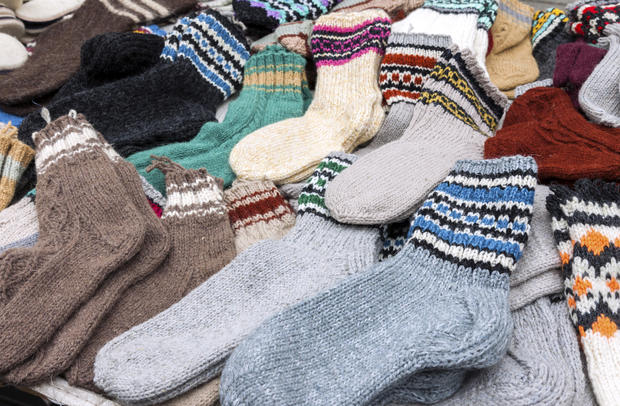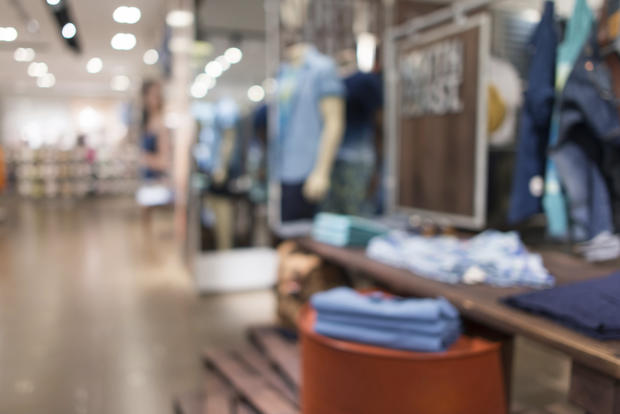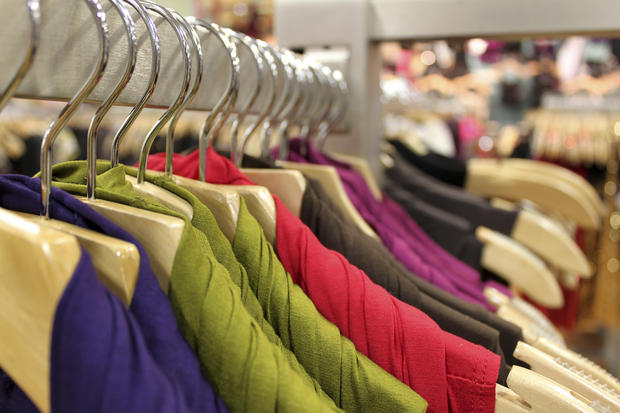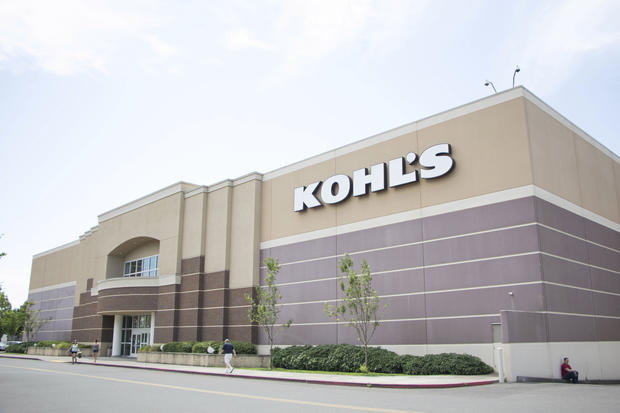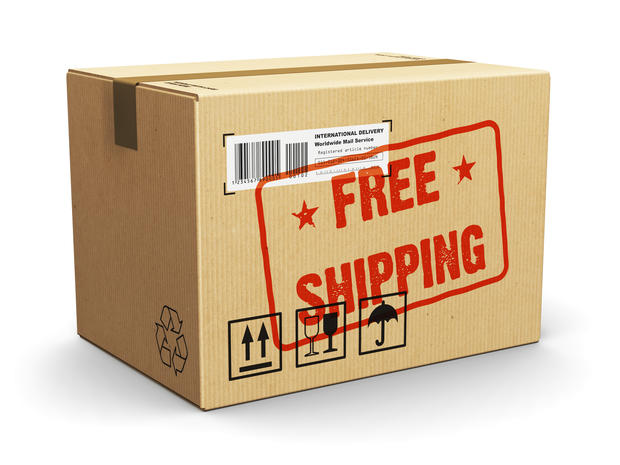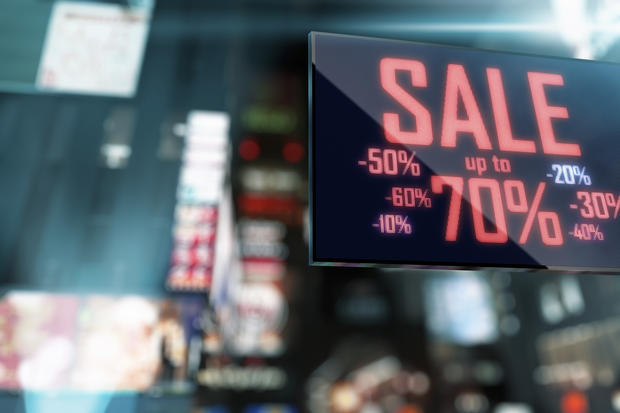11 tricks retailers use to get more of your money
By Morgan Quinn/GOBankingRates
If you've ever gone over budget when shopping at your favorite store, it probably wasn't an accident -- at least, not on the store's part. According to savings experts, retailers use a variety of tactics and tricks to get consumers to spend as much as possible.
From clever product placement to crafty pricing strategies, click through to see the most common "tricks" retailers use -- and how you can avoid them.
1. Pre-cut produce
To save money on groceries, keep an eye out for this trick. Josh Elledge of SavingsAngel.com said stores can easily double their profits on packaged produce.
"If you want convenience, you'll generally pay for it," he said. "Produce that is cut, prepared and packaged can be much more profitable for retailers. Compare the price per pound of a bunch of carrots versus a bag of washed baby carrots -- it can be a big difference."
If you want to keep your produce costs down, go for whole, unprepared fruits and vegetables. It's worth spending 10 to 15 minutes doing your own slicing and dicing at home.
2. Prepared foods from the deli and bakery
Grocery stores also entice customers to buy prepared foods by placing pre-made meals and food around the perimeter of the store. Like pre-cut produce, many customers might end up paying for the convenience.
"The perimeter is heavily trafficked and almost always gives you access to the deli, meat, bakery, seafood and dairy departments, where profits can help offset those loss leaders at the store's entrance and elsewhere," said Elledge.
He added, "Prepared foods at the deli are as highly profitable as a restaurant, and the smells emanating from the bakery give you more of that warm feeling that encourages you to spend more."
It's tempting to throw a roasted chicken and glazed veggies in your cart and call it dinner, but you can save money on food by purchasing the ingredients and preparing the meal at home. And if you're pressed for time, try cooking meals in bulk and freezing for later.
3. Piling sale items in bins
It's very common for retailers to fill open bins with goods that are on sale. Bins are easy to fill to the brim with sale merchandise, which creates a sense of urgency to buy and a treasure hunt-like shopping experience.
To avoid this trap, don't head to the store looking for a bargain, and be wary of sale bins. Keep a running list of what you actually need -- and stick to it.
"Shoppers who are looking for bargains when they shop actually spend more than people who are only shopping for a particular list of items," claims Elledge.
4. Extra-large carts and shopping bags
Large carts and bags make it easy to grab all the items you need, but they also make it easy to pile on a bunch of items you don't need. So instead of grabbing a giant cart or bag on your next shopping trip, try ditching them altogether and see if you end up saving money.
5. Maze-like store layouts
Retailers who want their customers to spend more know that the longer they keep them in the store, the more money they'll likely spend, said Elledge. If you notice that you tend to spend more money when you're shopping in a store with a confusing, maze-like layout, consider avoiding that store and ordering items online instead.
6. Changing store layouts
Not every store is big enough to wind customers through a maze, so what do they do instead? Simply change the store layout.
"By changing up the layout, they get you to spend more time in the store looking for the item you need," said John Schmoll, founder of Frugal Rules. "The more time you spend in the store provides more opportunity to buy."
If you're favorite store suddenly switches up the layout, grab the nearest employee who can help you find what you're looking for. Stick with this counter-move until you've mastered the new floor plan, and you'll avoid wandering the aisles and purchasing items you don't need.
7. Controlling your mood with music
Alexander Reichmann, CEO of iTestCash, said retailers use music to set the mood and control their customer's energy levels. In fact, one 2012 study Reichmann cites found that moderate noise distractions enhance creativity and make customers "more likely to buy new and innovative products."
"[In] a sporting goods store, you may hear music that makes the shopper feel more energetic in that shopping environment," Reichmann said. "The easiest way to avoid falling for this is to plan your shopping trip in advance, either with a budget or list. And don't go over what you intend on spending there."
8. The "bounce-back" promotion
"Bounce-back" offers usually compel shoppers to come back to the store. Kendal Perez, savings expert with CouponSherpa.com, said examples of this kind of offer include Kohl's Cash, The Limited Virtual Dollars and Lane Bryant's Real Women Dollars.
"Typically, you have to spend a certain amount in order to earn one of these vouchers," she said. "To redeem the offer, users must spend a minimum amount -- anywhere from $25 to $50 -- within a certain time frame. This offer is effective because it drives the shopper to potentially spend more than he or she intended. It also creates a return visit and purchase, which the consumer may not have otherwise made without the voucher."
Avoid spending more by recognizing "it as a retail strategy, and only spend what you intended," recommended Perez. "Instead, use these offers to offset a planned purchase, like a gift or upcoming expense that can be applied for money savings."
9. Free shipping thresholds
Many retailers offer free shipping year-round, but Perez said free shipping is the most common type of threshold offer where "a shopper must spend a certain amount in order to receive the deal. For example, a customer might have to spend at least $50 to get free shipping."
Don't fall for every threshold offer, though. Perez recommended doing a little math before you check out. "If the shipping fee is $8, and the total is more than $8 away from reaching the threshold, it may make more sense to pay the shipping fee than to add a $15 or $20 product," she said.
She does make one exception to this rule, however: "If you're ordering from Amazon, it's possible you can add one or more household items on your list you'd normally buy from your local supermarket to qualify for the shipping threshold and avoid a shipping fee while crossing something off your list."
10. Free trials
Jordan Wolff from Shrinkabill.com, a service that negotiates rates on bills, said cable companies are notorious for this strategy.
"Many times, these companies will offer you free premium channels for a set period, such as three months," he said. "But then once the period ends, you are responsible to turn off the premium channels. Otherwise, at the end of the promotion, the channels will remain active and the cable provider will start charging for these services."
If you are tempted by a free trial, ask up front what kind of "free" promotion is being offered. If you discover the responsibility of cancelling falls on your shoulders, then Wolff recommended you either reject the service or set a calendar reminder in the final month of the promotion to call and ask the provider to turn it off.
Wolff also warned about being charged to install equipment or initiate the service. "Everything is negotiable, so you can always ask for these fees to be waived," he said. "Since you are a potential new customer, you will have more negotiation power."
11. Price anchoring
Many retailers use price anchoring to get customers to spend more money, said Allen Walton founder of online store SpyGuySecurity.com, which sells spy and surveillance equipment.
"[Retailers] make up a fake retail price and then have a heavily discounted sale price," he explained. "This makes it seem like the customer is getting a great deal compared to the usual price." Walton said this strategy is particularly effective because shoppers are trained to think sales are short-lived.
"They'll buy now instead of putting it off and risk the sale ending," he added.
To counteract this move, don't rely on the first price you see -- retailers want you to use their initial pricing to make purchasing decisions. Instead, do some online research, or even poll your friends and family to see what they have paid for similar items.
Click here for a look at even more pricing tricks.



